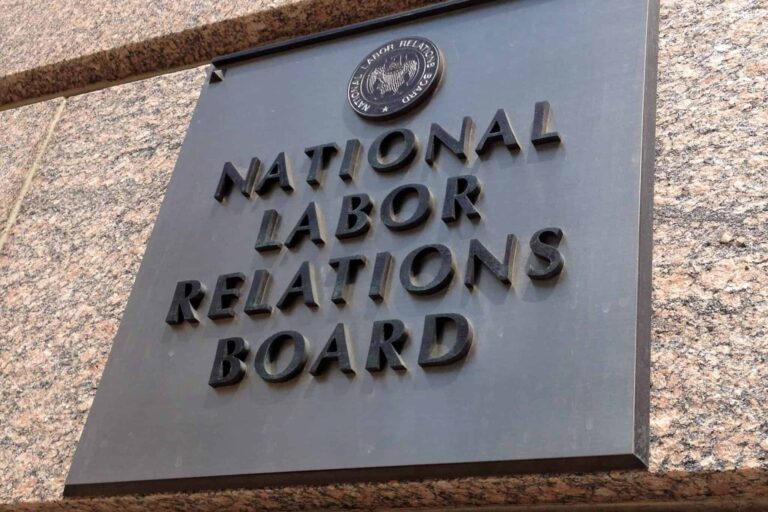
Darin M. Dalmat is a Senior Partner at Barnard, Iglitzin, & Lavitt LLP—a law firm in Seattle, Washington, that represents unions.
As Jason Vazquez recently noted in this blog, the Supreme Court will hear two cases in January—Loper Bright v. Raimondo and Relentless v. Department of Commerce—that seek to overrule or narrow Chevron, USA, Inc. v. NRDC, 467 U.S. 837 (1984). In this four-part series, I argue that even if the Court were to side with Chevron’s challengers, NLRB orders should remain legally entitled to judicial deference. Part I examines Chevron and its challengers. Part II analyzes the basis for and development of deference to the Board before and since Chevron. Part III dives deeper into the work deference to the Board actually does and the limits to that deference. Part IV then measures the challengers’ arguments against the framework for deference to the Board, sketching a vision of post-Chevron review of Board orders.
Chevron and Its Challengers
In 1984, the Court issued Chevron—an administrative law watershed, cited over 200 times by the Supreme Court and thousands of times by lower courts. Chevron considered a challenge by environmental groups to an EPA rule that elaborated the meaning of “stationary source” under a Clean Air Act permitting program. Under the rule, the EPA allowed polluters to use a plantwide definition of “stationary source,” thus allowing them to offset pollution from dirtier facilities with the lower emissions of cleaner facilities within the same plant. Id. at 853–54. This rule, issued at the beginning of the Reagan administration, supplanted the Carter-administration rule that required new permits whenever a component of a plant significantly increased emissions. Id. at 857.
The Court began its analysis by summarizing traditional principles of judicial review of agency interpretations of statutes they administer.
In a now-canonical two-step, it held that courts first ask “whether Congress has directly spoken to the precise question at issue. If the intent of Congress is clear, that is the end of the matter; for the court, as well as the agency, must give effect to the unambiguously expressed intent of Congress.” Id. at 842–43. In support of this first proposition, the Court cited nine Supreme Court precedents, spanning Webster v. Luther, 163 U.S. 331, 342 (1896) (unanimously observing that courts should, in doubtful cases, follow the interpretations of executive departments charged with administering statutes that are “fairly susceptible of different constructions”), through FEC v. Democratic Senatorial Campaign Committee, 454 U.S. 27, 32 (1981) (unanimously holding that the appellate court erred by failing to accord deference to the FEC’s reasonable interpretation of federal election law because its task, in determining whether the agency acted “contrary to law,” was “not to interpret the statute as it thought best but rather the narrower inquiry into whether the Commission’s construction was ‘sufficiently reasonable’ to be accepted by a reviewing court.”). This first step calls upon courts to employ “traditional tools of statutory construction” to determine whether the statute clearly resolves the issue. Chevron, 467 U.S. at 843 n.9.
If the statute does not clearly resolve the contested issue—because it is “silent or ambiguous” with respect to that issue—courts move to step two and must not “simply impose [their] own construction on the statute” but must instead determine “whether the agency’s answer is based on a permissible construction of the statute.” Id. at 843. The Court cited six precedents, spanning 1921 to 1981, supporting this proposition.
It explained these rules as a necessary consequence of Congress’s decision to entrust an administrative agency with responsibility to execute a legislative program, whose details Congress chose to leave to the policymaking discretion of the Executive Branch. Id. Congress may choose to entrust an agency with that responsibility either explicitly or implicitly. Id. When it does so, the Court has “long recognized that considerable weight should be accorded to an executive department’s construction of a statutory scheme it is entrusted to administer … .” Id. at 844 (citing eleven precedents, spanning 1821 to 1984, including three labor cases, NLRB v. Hearst Publications, 322 U.S. 111 (1944); Republic Aviation v. NLRB, 324 U.S. 793 (1945); and NLRB v. Seven-Up Bottling Co., 344 U.S. 344 (1953)). Ultimately, the Court concluded, Congress has ample Article I legislative authority to authorize administrative agencies to work out the details of its legislative programs, with discretionary policymaking judgment within the bounds Congress establishes by statute.
That guide to judicial review of agency action did not end the Court’s analysis. It spent another 20 pages meticulously reviewing the relevant statutory language and history, the legislative history, the programs at issue, and the compatibility of the EPA’s rule with the relevant statutory language before sustaining the rule. Id. at 845–66.
Chevron itself founded its approach on over 150 years of precedent, respect for legislative determinations of how best to carry out legislative goals, superior administrative familiarity with the technical details of the statutes they administer, judicial humility and the proper location of policymaking in the political branches of government, and the Executive’s political accountability to the American people. Id. at 843–44, 865–66.
Since then, the Court has further elaborated that Chevron rests on a background presumption of Congressional intent: when Congress leaves an ambiguity in a statute administered by an agency, it empowers the agency with “whatever degree of discretion the ambiguity allows.” City of Arlington v. FCC, 569 U.S. 290, 296 (2013) (cleaned up). Congress always remains in control of the scope of agency discretion because it “knows to speak in plain terms when it wishes to circumscribe, and in capacious terms when it wishes to enlarge, agency discretion.” Id.
In the face of this extensive precedent and reasons supporting it, one might fairly expect Chevron to be settled. Petitioners, however, point to academic critiques and dissenting or separate opinions from members of the Court—beginning around 2013 but, in 2018, accelerating in frequency and heightening in pitch. Pet. Br. at 7.
With those winds at their sails, the Loper Bright fisheries charge Chevron’s judicial deference with three main sins: it (1) violates separation of powers; (2) defies section 706 of the Administrative Procedures Act (APA), which requires “the reviewing court [to] decide all relevant questions of law … ,” 5 U.S.C. § 706; and (3) flouts the historical record. Pet. Br. 23–32.
We’ll return to the merits of these attacks in Part IV. For now, it’s enough to observe that the challengers leave unclear what regime they offer to replace Chevron. Is NMFS’s fishery rule, alone, unworthy of deference? Should courts review all agency interpretations de novo? Should courts calibrate their deference agency-by-agency or even interpretation-by-interpretation? If so, how and why? Petitioners do not say. It is far easier to destroy a functioning system than to devise a new one. In an age—marked by a gerrymandered House, an undemocratic Senate, and an arguably unconstitutional filibuster—when federal legislation has become sclerotic, executive action is one of the few remaining workable options for federal governing. Gumming up agency discretion—even within legislative bounds—quells the very possibility of a functioning national government. For some, that’s likely the point.
The views and opinions expressed in this article are those of the author and do not necessarily reflect the views or positions of any entities that the author represents.









Daily News & Commentary
Start your day with our roundup of the latest labor developments. See all
July 26
Prop 22 survives; video game workers take action; NLRB challenged.
July 25
Disney union reaches tentative agreement, FAA agrees to improve worker conditions, and Olympic dancers drop strike notice.
July 24
Unions demand end to military aid for Israel; UAW and Teamsters hold out on Harris endorsement; Judge declines to block FTC ban on non-competes
July 23
NLRB drops appeal of a district court case striking down its joint employer rule; red states challenge EEOC’s pregnancy rule; and the WNBA players’ union taps advisors.
July 22
Unions respond to Biden's exit, many back Harris.
July 19
The Bronx Defenders Union announces a tentative collective bargaining agreement; Amazon workers continue a strike in Skokie; Bangladesh students continue protests over government job quotas.